Lübeck
The Hanseatic City of Lübeck (Hansestadt Lübeck) is the largest German port on the Baltic Sea and the second-largest city in Schleswig-Holstein, situated at the mouth of the river Trave (hence the name of its port suburb Travemünde). The city has been an important port since the 12th century and, together with nearby Hamburg, has founded what became the powerful Hanseatic League of ports and trading towns. Unlike fellow Hanseatic Cities of Hamburg and Bremen, it has lost its "Free" (Freie Stadt) status and has been incorporated into the surrounding federal land, but history also has a sweeter side for Lübeck - it is globally known for the finest marzipan.
The old town (Altstadt) of Lübeck , although considerably damaged during the Second World War, survived from medieval times in a pretty much unchanged or truthfully rebuilt form. It is now listed as a UNESCO World Heritage site. The city centre's medieval skyline, mainly composed of seven Gothic-style church towers, is still intact. Lübeck is surrounded by parts of the old city walls with two of the original four city gates left. Most notable is the Holsten Gate (Holstentor) which was the motif on the German banknote of 50 Deutsche Mark prior to reunification, when the bills were redesigned.
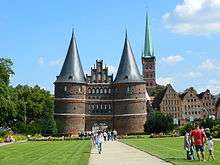
Understand
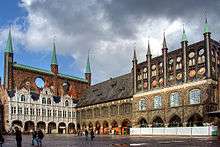
Historically, Lübeck was an independent city state (in fact they only lost that status due to a Nazi era law in 1937) and accumulated considerable wealth as the primus inter pares of the Hanseatic League from the 11th to the 17th century. Many merchants made a fortune on shipping salt to other Baltic port cities in exchange for valuable goods needed in Germany. Many impressive warehouses are located at the old harbour and can be accessed by tourists since they host museums, shops, restaurants or pubs today.
After sea trade substantially shifted away from the Baltic Sea to the Atlantic in the 17th century, Lübeck was slowly marginalized as a trading city against the North Sea ports of Bremen and especially Hamburg. This led gradually to a noticeable decay in wealth and eventually inspired contemporary writers to draw a resigned picture of the city's residents, most famously in the novel Buddenbrooks by Thomas Mann, who earned a Nobel Prize for it in 1929. In the second world war Lübeck - not unlike Hamburg - was a target for allied (primarily British) bombings and in one particularly "successful" raid much of the densely built old town burned down. While most of the landmark buildings have since been restored, the New Lübeck has a lot less wood (for obvious reasons) and historic style residential buildings (mostly for financial reasons).
After World War II, the city was ultimately marginalized due to the nearby "Iron Curtain" which impeded access to many trading partners in the eastern Baltic and even cut off two minor urban districts of the city itself. As a traveller you might notice two effects of the Cold War still visible today: First some bridges have something that looks like undersized manhole covers at either end. These were in fact holes that could be filled with explosives to destroy the bridge, should the Soviets ever attack. The other thing you might notice is that there is a lot of (for Central European standards at least) untouched wildlife just outside the city to the east. While it was preserved by happenstance and the GDR's attempt to shut its border airtight, there are now efforts to preserve this "green band" of wildlife all through Germany. A curiosity in this area are Nandus, flightless birds native to South America that escaped in the early 2000s and roam free since. Despite efforts to boost commerce in the Baltic region, the city is still struggling from the cold war era with a fragile economy that leads to a comparatively deteriorated infrastructure outside the picturesque city centre. Ironically the very fact that the cold war ended dealt a further blow to the city, as it lost its "border town" status that made it eligible for big subsidies. Add to that a nearly total wipeout of the once huge ship building industry in the 1990s and you have an economic crisis the city hasn't quite shaken off to this day.
Get in
By plane
Hamburg Airport (HAM IATA) is just one hour away, and offers many international connections. From the airport you can take the S-Bahn to Hamburg main station with an hourly train connecting to Lübeck main station.
By road
Lübeck is about 60 km northeast of Hamburg and easily accessible by car through the Autobahn A1. With the opening of the new highway A20 (Baltic Sea highway) to Rostock the state of Mecklenburg-Western Pommerania is only a very short distance away. Note that the A1 is the backbone of the cargo transport from the Hamburg to the Travemünde port, there will be heavy (and rather slow) traffic on the right of the three lanes.

By rail
On working days, commuter trains to and from Hamburg leaves every 30 minutes, on weekends and on holidays every 60 minutes. Local trains from Lüneburg, Kiel, Schwerin and the beach resorts Travemünde and Timmendorfer Strand depart on an hourly basis. Additionally, InterCity trains via Hamburg leave/arrive every two hours, with some trains continuing to Berlin, München, Cologne or Frankfurt among others. There are also regular trains from Copenhagen, Szczecin and the island of Fehmarn.
- 🌍 Lübeck Hauptbahnhof, Am Bahnhof 6 (At the western edge of the city center.).
By boat
There are many ferry connections to and from Lübeck. Passengers ferries arrive and depart from Skandinavienkai, a quay in Lübeck's borough Travemünde Most of the ferries run 1 or 2 times every day. Current connections are:
- Helsinki, Finland operated by Finnlines
- Malmö, Sweden operated by Finnlines
- Trelleborg, Sweden operated by TT-Lines
Skandinavienkai is served by buses 40, 30, and 31 (timetable), which travel between Travemünde Strandbahnhof and Lübeck ZOB. There is also a train station called "Travemünde Skandinavienkai"; it is about 1 km from the ferry terminal building. However, the only way between the ferry terminal and the train station is by those same buses. It is not possible to walk.
By bus
The liberalisation of the national long distance bus market benefits Lübeck. Companies like FlixBus and Postbus offer routes to Berlin for as low as 15 Euro four times a day. Several other companies and lines are in the planning process. for detailed information on the (still young and volatile) market and other companies see Long distance bus travel in Germany Buses stop at or close to the ZOB, which is also the hub for local buses and just a few hundred meters from the main train station.
Get around
As most of the attractions are within or close to the compact Altstadt, you can get everywhere quickly on foot. There is a local bus service hub at the Hauptbahnhof/ZOB (central rail station) with services to all parts of the town and nearby towns. For medium to long distances within the city cycling is also an option and becoming more and more popular with the locals. Taxis are available nearly everywhere.
Because local bus tickets are quite expensive in comparison to other German cities, a taxi is generally cheaper for a group of three and up if your destination is less than 10km away. You have to go by taxi at night anyway, because there is no nightly bus service.
Tourist information can be obtained in the city hall (Rathaus, Breite Straße) or at the "Welcome Centre", opposite Holstentor.
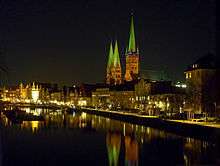
See
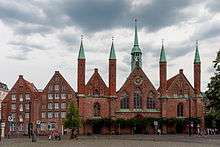
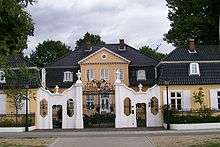
The main attraction is the medieval Altstadt (old city) located on an island surrounded by the Trave river and its various channels. Listed as an UNESCO World Heritage site, it offers an astonishing variety of different architectural styles. The streets of Lübeck are a delight for a connoisseur of architecture.
Bear in mind that Lübeck's Altstadt is not an open-air museum but a living city centre, so don't expect a complete medieval site. You'll find many beautiful old buildings intertwined with modern ones and a modern infrastructure. A particularly well-preserved 13th century part of the Altstadt is the Koberg area at the island's northern end. And don't miss the Gänge, small streets off the bigger roads, with small houses and a peculiar atmosphere.
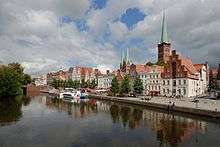
Noteworthy historical buildings include:
- The churches, housing several of the finest Northern German artworks:
- St. Marien. Or Marienkirche: the biggest one, a fine brick gothic building, located near the Rathaus (city hall) at the very centre of the Altstadt;
- the Dom: very nicely situated on the quiet southern end of the island, contains a wooden crucifix by Bernt Notke;
- St. Petri (Petrikirche) (near Marienkirche). its tower platform (to be reached by an elevator) offers a great view over the city, and if weather conditions allow it you can even see Travemünde (17 km to the north-east)
- St. Jakobi or Jakobikirche: north of St. Marien, at the Koberg;
- St. Aegidien or Aegidienkirche: the smallest one, in the eastern Altstadt;
- St. Katharinen or Katharinenkirche (without a tower): south of St. Jakobi, contains works of Ernst Barlach;
- The two remaining city gates: Holstentor (near train station/ZOB bus terminal) and Burgtor (northern Altstadt); they both contain museums nowadays;
- Heiligen-Geist-Hospital near Koberg;
- Classicist Behnhaus/Drägerhaus in Königstraße, hosting an art museum;
- The Rathaus or city hall: its architecture is a stylistic potpourri reaching back to the 12th century. Note that it is still the seat of the city administration and not a museum, so you're not expected to have a look inside on your own. But there are guided tours every hour or so where the many historic rooms and the gallery of city leaders' portraits are explained (in German and possibly other languages).
- The Willy Brandt House: This former (1969-1974) chancellor's childhood home has now been turned into a museum about his life and career in politics. Entrance is free.
There are two houses dedicated to Lübeck's two literature nobel prize laureates: The Buddenbrookhaus is dedicated to the brothers Thomas and Heinrich Mann, who spent their youth there, and contains many of their works. It's near Marienkirche, in Mengstraße. Then there is the Günter-Grass-Haus (of The Tin Drum fame) in Glockengießerstraße.
The Museumshafen (museum port) between Beckergrube and the Musik- und Kongreßhalle building features some old-fashioned ships, among them a rebuilt Hanseatic kraweel ("Lisa von Lübeck")—more so in winter, because many of these ships are still in use during summer.
The borough of Moisling has a special Jewish history. An old Jewish cemetery is still to be found there.
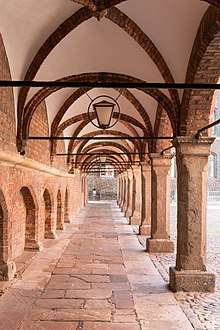
Do
- Walk around the Altstadt and enjoy the charming atmosphere of the former queen of the Hanseatic League.
- Lübeck Tourism site. The offers excellent guidance on self guided tours as well as guided tours.
- Take a bus/boat/train ride to Travemünde, a sea side resort and enjoy the view of the Baltic Sea. A bus journey is fastest, as it takes about 20 minutes. A boat ride however, is much more scenic. The train stops at the iconic "Travemünde Strand" Station and is another good option. For further information, enquire at the "Welcome Center" at the Holstentor.
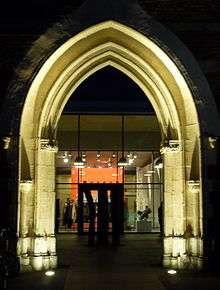
- Visit the newly restored St.-Annen-Museum and the Buddenbrookhaus for some cultural experience.
- Take a seat on one of the tourist boats and ship around the city (boats go off every hour or so on the Holstentor side of the Altstadt island). For example you get a beautiful view of the Salzspeicher (Hanseatic salt warehouses; fans of classic horror movies might be interested by the fact that one of these Salzspeicher was the house of Count Nosferatu both in the Murnau film and the Werner Herzog remake with Klaus Kinski). If you've got more time to spend ship on along the Wakenitz river which links the Trave river with the Ratzeburg lake. Parts of the river offer an astonishing flora.
Theatres
- Theater Lübeck: Beckergrube;
- Puppet theatre;
- several smaller theatres.
Cinema
- Stadthalle (southern Altstadt): mainstream;
- Filmhaus (Königstraße, vis-à-vis Katharinenkirche): the special and off-beat film cinema;
- Kommunales Kino (Mengstraße): niche films.
Luebeck.de > Aktuelles > Kinoprogramm keeps an updated programme for all cinemas in town.
Note that almost all films are dubbed in Germany, including Hollywood productions. Kommunales Kino is an exception, showing many subtitled films.
If you are visiting Lübeck during autumn, you might want to check out the Nordische Filmtage (Nordic film days), a festival where films from Northern Europe (especially Scandinavia) are shown in all cinemas, most of them in the original languages with German or sometimes English subtitles. Get a festival programme in one of the cinemas.
Clubs and discotheques
Normally, they don't cater to a special scene, but have themes and playlists changing on a daily basis. Have a look at the respective web pages or at Piste Lübeck for a programme. If you are in Lübeck, you can get a free printed copy of Piste magazine in newspaper shops or some restaurants.
In Germany, the normal age to be admitted into a club/disco is 18 years or older. Teenagers over 16 years may be allowed to enter clubs (and stay longer than 0:00pm) when presenting a filled out form (usually found on the internet) saying that a person over 18years is caring for them for the time of their stay in the club and on their way home.
Some of the biggest/most frequented clubs in Lübeck are:
- A1 Musikpark, Lohmühle.
- Hüx, Hüxstraße.
- Fabrik 25.
- Eishaus.
- Body & Soul.
- Dr. Rock.
There are also infrequent goth parties in different locations.
Other regular events
- May: Maifest (May festival) Punk Rock/alternative open air music and art festival at the so-called Walli at Willy-Brand-Allee
- July: Travemünder Woche sailing festival in Travemünde;
- August: Duckstein Festival;
- November/December: Artificers' market on Koberg;
- December: Weihnachtsmarkt (Christmas market) at central market place, medieval market at St. Marien.
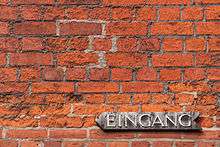
Buy
- Lübecker Marzipan is the most famous export from the City. It is available in several varieties. The excellent Cafe Niederegger has outlets throughout the city. It's main store on the Alter Markt is a tourist attraction in its own right. It includes a museum dedicated to the Manufacture of Marzipan as well as many Marzipan sculptures.
- Walk down the Hüxstrasse and the "Fleischhauerstrase", Lübeck's famous shopping streets and enjoy shopping. You may find artists, painting various interpretations of the Holstentor, which make an excellent souvenir.
- Rotspon wine, available in nearly every shop.
- Souvenirs and Lübeck-related literature can be purchased e.g. at the Rathaus bookshop (between market place and Marienkirche).
Eat
There are several restaurants within the city centre which will satisfy most tastes. At the pinnacle is the Michelin starred Wullenwever. Other good options include Markgraf and Schabbelhaus while the most popular spot for tourists is the Schiffergesellschaft. If you're in for locally brewed beer, check out the slightly Bavarian-themed Brauberger in Alfstraße. Lübeck is well known for its high density of cafés and "Kneipen" (pubs), so peep into some of the smaller streets as well and see if you can find something that fits your taste.
- Wullenwever, Beckergrube 71, ☎ +49 451 704333.
- Markgraf, Charlottenstr. 33, ☎ +49 451 706-0343.
- Schabbelhaus, Mengstraße 48-52, ☎ +49 451 72011.
- Schiffergesellschaft, Breite Straße 2, ☎ +49 451 76776. Excellent food in historic building. Good friendly service (a lot of staff). Many rooms, but if you want a seat in the main hall a reservation is recommended. Prices are a little higher than some but well worth it for the quality of the food and the surroundings.
- 🌍 Taste, Holstenstr. 21 23552, ☎ +49 451 20229566. Mon - Fri 8 - 19, Sat 8.30 - 19, Sun 9 - 17. Bagels, fresh juices, soups and other tasty things with many vegetarian options
- 🌍 Marae, Engelsgrube 59, 23552, ☎ +49 451 98 950 782, e-mail: info@marae.de. Tue - Fri 12:00 - 20:00, Sat 10:00 - 19:00, Closed Sun & Mon. Vegan restaurant with homemade lemonade and raw cakes.
Drink
There are many traditional bars in Lübeck, but if you're after a bit of international "big city" vibe, Cole Street - Bar Cafe Gallery - on Beckergrube 18, right next to the theatre, is a great find. Cool design, music and regularly changing contemporary art exhibitions. Check colestreets site for their latest info. You might also want to check out NUI, the great Thai & Japanese Restaurant at the bottom of Beckergrube.
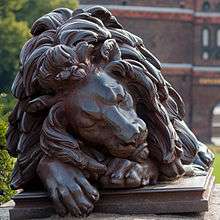
Sleep
Budget
- 🌍 Jugendherberge Altstadt (Youth Hostel), Mengstr. 33, 23552 (from central bus station ("ZOB") (almost) in walking distance, closest bus stops: "Lübeck Beckergrube", "Lübeck Holstentorplatz"), ☎ +49 451 70 20 399, fax: +49 451 77 012, e-mail: luebeck-altstadt@jugendherberge.de.
- 🌍 Jugendherberge Vor dem Burgtor (Youth Hostel), Am Gertrudenkirchhof 4, 23568 (from central bus station ("ZOB") with various bus lines towards Gustav-Radbruch-Platz), ☎ +49 451 33-433, fax: +49 451 34 540, e-mail: luebeck@jugendherberge.de.
- 🌍 RuckSack Hotel, Kanalstr. 70, 23552 (get off bus 6 (airport bus) at Sandstrasse or Koenigstrasse and walk to hostel), ☎ +49 451 706892, e-mail: piias-rucksackhotel@t-online.de. Friendly and helpful owner. Clean and well kept rooms. Opposite Aldi food store and next to the hostel is a restaurant. Located on north side of old town next to river. Dorms for 14€, double 20€ per person.
Mid-range
- Holiday Inn Lübeck, Travemünder Allee 3 (Practical situated just north of the city gate (Burgtor) and opposite bus terminal and taxi rank), ☎ +49 451 37060. Good reasonable size rooms, good breakfast choice.
- Ibis Hotel Lübeck, Fackenburger Allee 54, ☎ +49 451 400-40. Budget hotel located quite close to the Main railway station. from 55€.
Splurge
- 🌍 Park Inn by Radisson Lubeck, Willy-Brandt-Allee, 1-5, ☎ +49 451 15040.
- 🌍 Radisson Blu Senator Hotel, Willy-Brandt Allee, 6, ☎ +49 451 1420.
Go next
There are several options to spend your time around Lübeck.
- Sea-side towns for sun & beaches are:
- Travemünde Still part of Lübeck and only a 15-20 minute drive away. The railway station Travemünde Strand is right next to the beach and its big clock tower displays the departure time of the next train.
- Timmendorfer Strand /Niendorf about 20-30 minutes and a more stylish resort and very popular with people from Hamburg
Somewhat north of Travemünde is a cliff (Brodtener Ufer) that has a hiking way from Travemünde to Niendorf (1-1,5 hrs walk) with good views on the Baltic coastline. Niendorf/Ostsee is somewhat more cosy and family oriented with its fishery port and a new renovated public swimming pool and a well-known bird zoo (Vogelpark Niendorf, situated in a small nature resort).
The Baltic coast resorts in Mecklenburg Pommerania are about 1-2 hrs drive on the Autobahn A20 away and might be worth a day trip
For nature lovers a trip to the lakes south of Lübeck may be of interest as there are great opportunities for bird-watching (e.g. the Ratzeburger See and the Schaalsee). Ratzeburg (with its Ernst-Barlach and A.-Paul-Weber museums) and Mölln are also worth a visit, especially as they are easily accessible by train. Near Ratzeburg is also one of the rare places to see the nearly extinct European bison—not a very spectacular facility, just some buffaloes on a pasture, but if you're in the area and have never seen one you might want to look out for the "Wisentgehege".
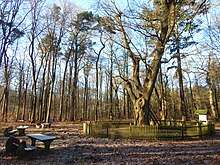
If you're travelling on northwards to Kiel, consider a (train) stop in one of the three small towns of Eutin, Plön, and Preetz. Among other sites, each of them boasts a "Schloss" or former aristocratic mansion. The towns are situated in a lake district which is popular for rambling and canoeing in summer (you can e.g. rent a canoe in Plön and go to Preetz by Schwentine River and through various lakes, then the canoe-centre people will get you and your canoe back to Plön by car).
And don't forget that it's just a mere 50 minutes by train to Hamburg (they go each hour).
During the summer the Schleswig-Holstein music festival is one of the largest events in northern Germany. An abundance of concerts with world-famous artists and orchestras attracts many people every year.
| Routes through Lübeck |
| Bremen ← Hamburg ← | W |
→ Wismar → Rügen |
| Copenhagen ← Fehmarn ← | N |
→ END |